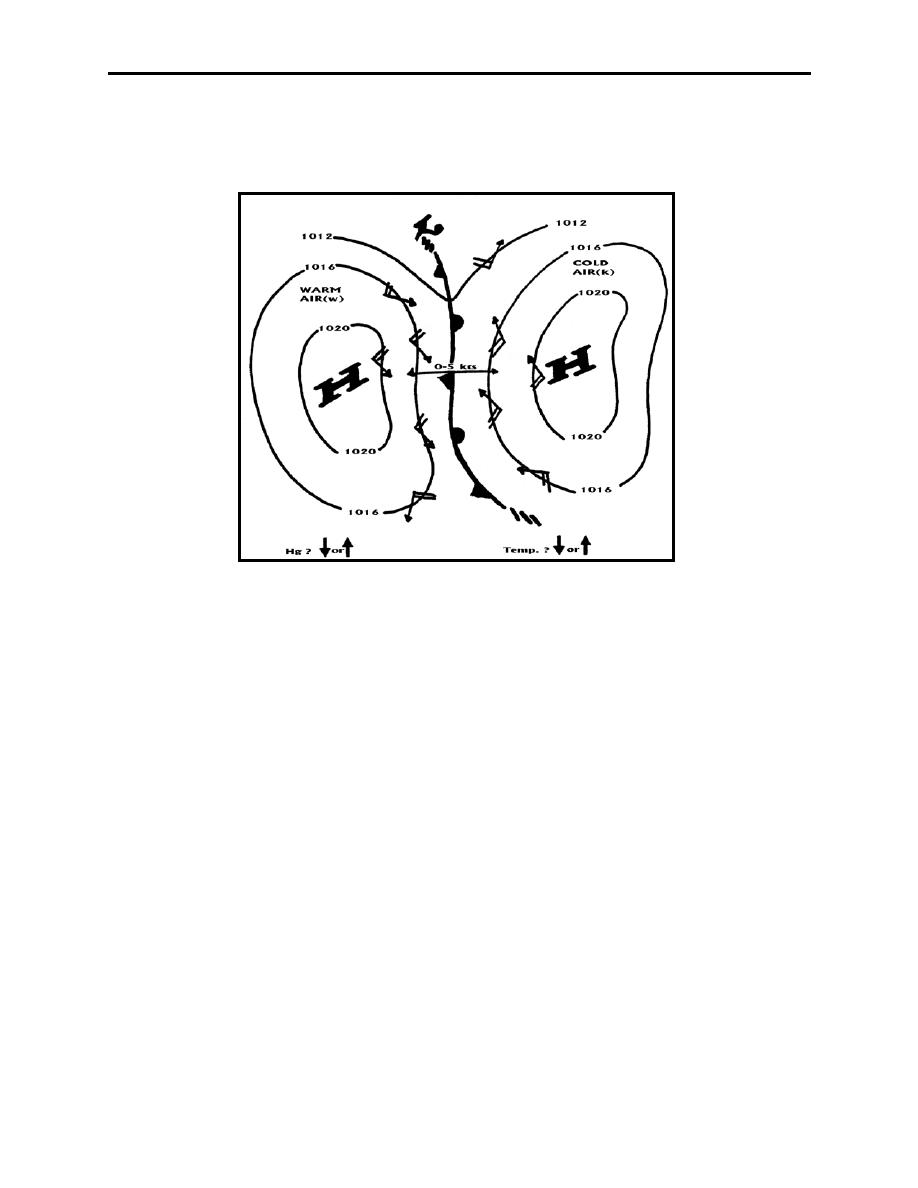 |
|||
|
|
|||
|
|
|||
| ||||||||||
|
|  AVIATION WEATHER
CHAPTER THREE
the front rather than against and/or away from it. Therefore, a stationary front has a 180 wind
shift. The wind shift may be from any one direction to the opposite direction, as stationary fronts
are less likely to be aligned in any one particular direction.
Figure 3-16 Stationary Front
The weather conditions occurring with a stationary front are similar to those found with the
warm front, but are usually less intense. The weather pattern of a stationary front may persist in
one area for several days, until other, stronger weather systems are able to push the stationary
front weather along its way.
OCCLUDED FRONTS
Occluded fronts form when a faster moving cold front overtakes a slower moving warm front.
There are two types of occluded fronts, cold and warm. The type of occlusion that forms
depends on which front remains in contact with the ground. For example, if the cold front
remains in contact with the ground, then it is named a cold front occlusion.
Occlusions are shown on surface charts with both cold and warm frontal symbols pointing in the
same direction, but colored purple. Both types of occlusions tend to be aligned from NW to SE,
and hence move toward the NE at the speed of the front that remains on the ground. The wind
shift across either type of occlusion will be a 180 shift, as there are actually two fronts in the
same location. Therefore, ahead of the occlusion, the winds will be the same as those ahead of
the warm front, and behind the occlusion, the wind will be from the same direction as behind the
cold front: the wind shift is SE to NW. Because the occluded front is the result of the meeting of
both a cold front and a warm front, the weather associated with the occlusion will be a
combination of both types of frontal weather.
Mechanics of Frontal Systems 3-17
|
|
Privacy Statement - Press Release - Copyright Information. - Contact Us |